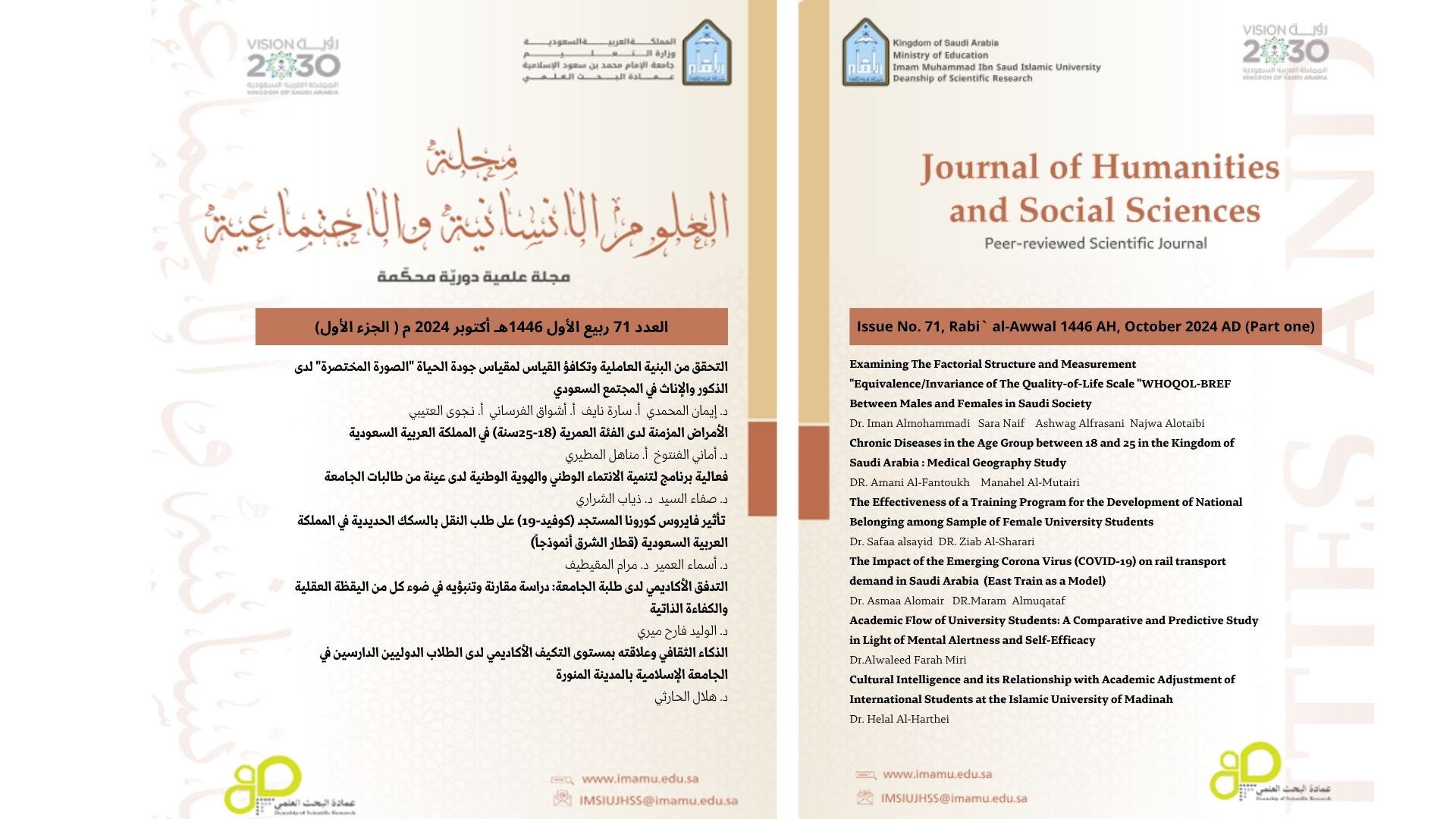Academic Flow of University Students
A Comparative and Predictive Study in Light of Mental Alertness and Self-Efficacy
Keywords:
التدفق الأكاديمي / اليقظة العقلية / الكفاءة الذاتيةAbstract
The current study aimed to explore the relationship between academic flow, and both mental alertness and self-efficacy. The study also aimed to recognize the role of each one of mental alertness and self-efficacy in predicting academic flow according to type and academic specialization and the interaction between them among students of Imam Muhammad bin Saud Islamic University in light of demographic and academic variables. The study sample consisted of (122) students from the Department of Psychology at the College of Social Sciences at Imam Muhammad bin Saud Islamic University, including (84 males, 38 females). The average age of females was (19.8) years, with a standard deviation (2.3), While the average age of males was (19.9) years, with a standard deviation of (2.6). The current study used the mental alertness scale: (FFMQ) prepared by (Bear, Smith, Hopkins, Krietemeyer 2006), which was Arabized by Abdul Karim (2019), The academic flow scale prepared by Abi Bakr, Al-Dawy and Suleiman (2021), and the self-efficacy scale prepared by Al-Shalawi (2018). The study concluded that there are statistically significant differences between students of high and low mental alertness in the academic flow in its various dimensions, and the differences in the direction of students with high mental alertness. The results also revealed that there are no significant differences between students of high and low self-efficacy in the academic flow in its various dimensions. There are also statistically significant differences in the self-enjoyment dimension between students of scientific and literary specialization, and differences are in the direction of students of scientific specialization, while there are no statistically significant differences according to specialization in the rest of the dimensions of academic flow. The study also found that there are statistically significant differences between males and females in the dimension of self-enjoyment and the dimension of integration and focus in the task and differences are in the direction of females. Finally the study revealed the description dimension could predict the academic flow, whereas each of the self-efficacy and the rest of the dimensions of mental alertness could not predict the academic flow.




